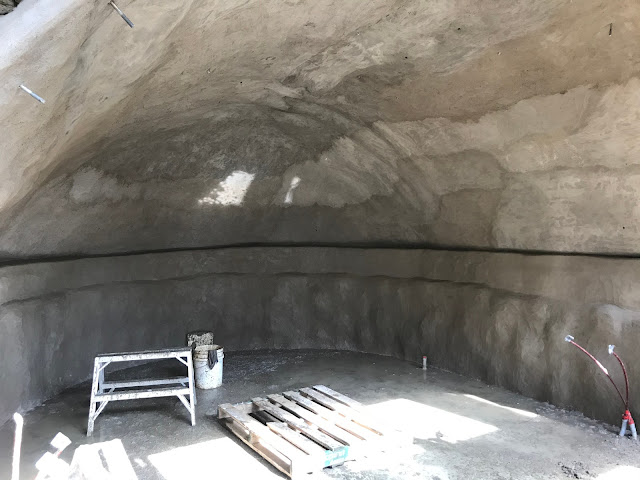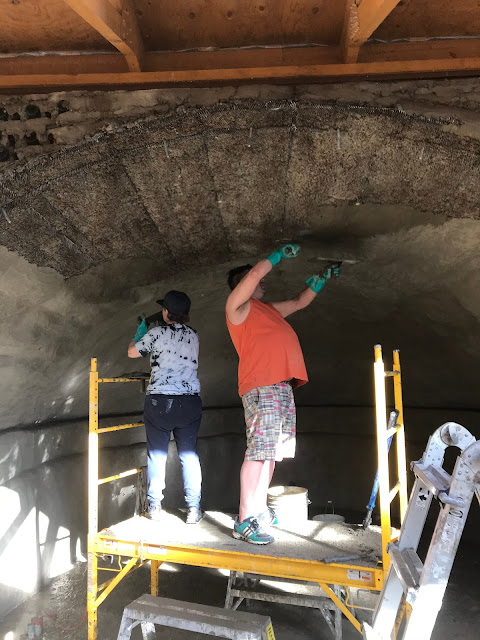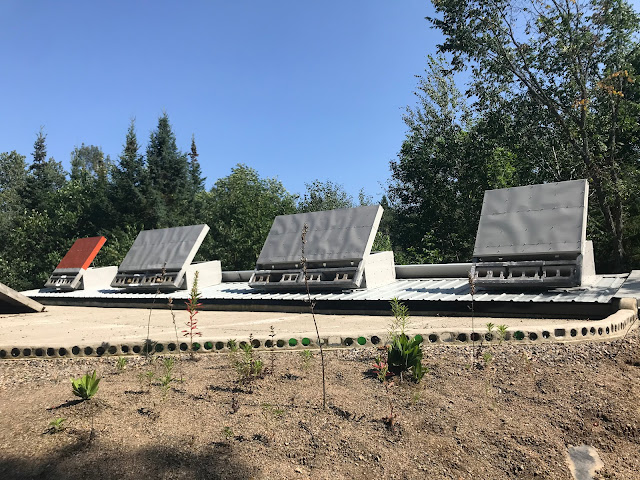Interior concrete floor poured! Very satisfying to have finished this stage of the build.
We started by adding crushed stone to increase height so that the finished 3" concrete floor will be flush with the existing interior footings.
Here Brice and Theodore are doing the heavy lifting:
Victoria was instrumental in laying down the 6 mil plastic layer on the gravel:
Meanwhile, Bruce was busy making rebar chairs out of leftover 2" rigid foam insulation. He is using an electric wire as a hot knife to make easy and clean cuts (i.e. no bit of styrofoam flying everywhere!)
Next came the 6x6 welded wire mesh and the in-floor heating tubes:
Thank you to the whole Buchy family for helping to prep the floor for concrete (from left to right) Victoria, Theodore, Brice, Bruce and Luciana:
Ready for the concrete truck and pumper. It was a hectic event so not too many action pics to show but here are a few to convey the gist.
Earthship friends BJ (right, middle) and JP (right, bottom) helped with the pour. Thank you so much! BJ operated the concrete pumper nozzle while JP and YP screeded. The two gentlemen on the left were the concrete pumper truck operators.
After screeding and some setting-time comes the finishing work. Here are the finishers (from right to left) Chris, Roy and YP. Thank you so much!

























































